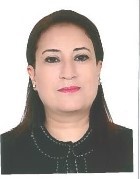
Duration
Four Years
Medium of instruction
English
Degree awarding body
SCD
Program Mission
The mission of the Graphic Design – Digital Program is to equip students with innovative design thinking approaches to effectively communicate using theoretical knowledge and practical exposure to pursue a professional career.
Accreditation
Institutionally Accredited by OAAAQA & Overseen by the MOHERI in the Sultanate of Oman.
Substantial Equivalency of the Bachelor of Science Graphic Design - Digital from the National Association of Schools of Art and Design (NASAD).
Quality Assurance Certificate from the Accreditation and Quality Assurance Commission for Higher Education Institutions (AQACHEI - Jordan).
Program Description
Graphic design-digital is the process of visually communicating ideas and information through the use of typography, footages and interactive design in digital environment format such as cinema, television, computers and mobile phones. Digital design is a multifaceted discipline which encompasses a variety of contents materials and tools. Products of the digital graphic designer include animation, motion design, information graphics, visual identity, web design in addition to digital graphic solutions for all media types. Scientific College of Design provides a comprehensive education within this wide discipline. Moreover, it strives to prepare proficient, imaginative and resourceful graphic designers with critical minds able to evaluate their own professional work in order to serve a large segment of the community. The college strives also to instill the digital graphic design in order to build futuristic minds and unleash students’ creativity.
Program Objectives
- Build a general knowledge of the Graphic design field and how to communicate professionally with a target audience through Graphic principles.
- Prepare students to create their graphic designs with technical, aesthetic, and conceptual ideas based on reproducing their knowledge of art and design principles.
- Demonstrate the ability to create and develop graphic design projects for different media using appropriate technology for producing specific media, in response to communication problems, including an understanding of principles of visual organization, composition, information hierarchy, symbolic representation, Graphic Design terminology, aesthetics, and the construction of meaningful images.
- Learning the ability of how to judge and compare visual designs and critique them depends on graphic design principles, message, target audience, media, using professional terminology
- Provide a learning environment in which innovation, invention, and originality can develop with the influence of significant cultural and aesthetic trends, both historical and contemporary, on art and graphic design applications.
- Qualify students to master all technical and practical aspects of graphic design with the professional skills and behaviors necessary to compete in the global marketplace for art and design.
- Promote a multidisciplinary vision, which facilitates the creative thinking ability to translate concepts, principles, and problem-solving techniques into visual messages through a variety of media that inform and persuade target audiences.
Program Learning Outcomes
- Recognize general educational knowledge such as research skills, business and psychological principles to apply them in their respective profession.
- Enhance English proficiency level to communicate effectively using art and design terminology.
- Apply art and design elements and principles to create artworks.
- Solve design problems to develop graphic design media that are demonstrating knowledge of form and content.
- Design and generate video and/or animations in a multimedia project using computer applications for digital media/multimedia projects appropriate communication skills.
- Demonstrate knowledge in the field of web design, working in HTML Coding; develop web page and interactive tools, to make a complete interactive website including multimedia elements.
- Communicate their ideas professionally and connect with their intended audience using visual, oral, and written presentation skills relevant to their field.
- Develop graphic design media that are demonstrating knowledge of visual hierarchy of type and image in three-dimensional compositions that leads the audience through a sequential reading of multiple surfaces.
- Demonstrate knowledge of the physical structure of the visual system, including the eye, receptor cells, important visual pathways, brain structures.
- Demonstrate and understanding of traditional 2D/3D animation and digital film development processes using the most up-to-date industry tools and techniques.
Career Opportunities
- Gain employment in a range of fields including Games and Mobile Apps.
- Find employment as freelancers in a range of fields such as marketing, TV media, education, e-publishing and information technology and more society segments.
- Manage and produce privately an animated se- quence for a television program, and interactive CD- Rom for Government/Private sectors.
- Self- employment is also a common option for graduates who are interested in entrepreneurship as the government is supporting and facilitating the es- tablishment of small businesses.
Year
Semester 1
ART510
Drawing I
3
DES511
Design Studio I A/B *
4
DES512
Technical Graphics I
3
DES513
Introduction to Design
3
ENG500
English for Art & Design I
3
LRT600
Learning Research Techniques
3
Semester 2
ART610
Drawing II
3
DES611
Design Studio II A/B *
4
ENG600
English for Art & Design II
3
PHO510
Photography I
3
GRA510
Introduction to Computer Graphics *
3
Year
Semester 1
DES620
History of Design
3
ENG800
English Academic Writing
3
GRA711
Introduction to Typography
3
ARA510
Arabic Creative Writing
3
GRA610
Intermediate Computer Graphics
3
Semester 2
GRA712
Graphic Design I
3
CST510
History of Oman Civilization
3
ART719
Sketching
3
ELE500
Elective
3
GRA713
Art of Illustration
3
GRA611
History of Graphic Design
3
Year
Semester 1
ART718
Digital Art
3
GRA714
Advanced Computer Graphics
3
GRA715
Graphic Design II
3
ENT600
Entrepreneurship
3
GRA716
Advanced Typography
3
PSY500
Introduction to Psychology
3
Semester 2
ART812
History of Modern Art
3
ENG700
Fundamentals of Oral Communication
3
ANI711
Animation Design I: Cutout Animation
3
GRA811
Web Design
3
ELE700
Elective
3
Year
Semester 1
GRA812
Visual Perception
3
GRA813
Graphic Design Seminar - Digital
4
ANI814
Motion Design
3
ANI712
Computer Animation I
3
MKT611
Digital Marketing
3
Semester 2
GRA815
Graphic Design Senior Studies - Digital
5
GRA816
Art of Calligraphy
3
GRA817
Advanced Interactive Design
3
GRA818
Graphic Design Internship
1
ANI818
Portfolio Design
3
Semester 1
ART510
Drawing I
3
DES511
Design Studio I A/B *
4
DES512
Technical Graphics I
3
DES513
Introduction to Design
3
ENG500
English for Art & Design I
3
LRT600
Learning Research Techniques
3
Semester 2
ART610
Drawing II
3
DES611
Design Studio II A/B *
4
ENG600
English for Art & Design II
3
PHO510
Photography I
3
GRA510
Introduction to Computer Graphics *
3
Semester 1
DES620
History of Design
3
ENG800
English Academic Writing
3
GRA711
Introduction to Typography
3
ARA510
Arabic Creative Writing
3
GRA610
Intermediate Computer Graphics
3
Semester 2
GRA712
Graphic Design I
3
CST510
History of Oman Civilization
3
ART719
Sketching
3
ELE500
Elective
3
GRA713
Art of Illustration
3
GRA611
History of Graphic Design
3
Semester 1
ART718
Digital Art
3
GRA714
Advanced Computer Graphics
3
GRA715
Graphic Design II
3
ENT600
Entrepreneurship
3
GRA716
Advanced Typography
3
PSY500
Introduction to Psychology
3
Semester 2
ART812
History of Modern Art
3
ENG700
Fundamentals of Oral Communication
3
ANI711
Animation Design I: Cutout Animation
3
GRA811
Web Design
3
ELE700
Elective
3
Semester 1
GRA812
Visual Perception
3
GRA813
Graphic Design Seminar - Digital
4
ANI814
Motion Design
3
ANI712
Computer Animation I
3
MKT611
Digital Marketing
3
Semester 2
GRA815
Graphic Design Senior Studies - Digital
5
GRA816
Art of Calligraphy
3
GRA817
Advanced Interactive Design
3
GRA818
Graphic Design Internship
1
ANI818
Portfolio Design
3
Course Details






Head of Visual Communication Department

I want to welcome you into the world of innovation and creativity. Now you are part of the hup of design creativity. you will have a great message is to provide your community with the best design solutions that contribute to the development of these societies throughout your design career.
Dr. Sherif Galal,
Head of Visual Communication Department
Scientific College of Design

1
Success in General Education Diploma or its Equivalent.2
The student should get a minimum grade of C- in Design Studio I & Design Studio II courses.3
The student should get C- at least in Introduction to Computer Graphics courseBS - Graphic Design - Digital
Tuition Fees
| Duration | Credit Hours | Fees | Other Fees | Sub Total | |
|---|---|---|---|---|---|
| General Foundation Program | 2 Semesters | - | 2,575 OMR | - | 2,575 OMR |
| Design Foundation Program | 2 Semesters | 33 | 2,475 OMR | 250 OMR | 2,725 OMR |
| Bachelor Degree | 6 Semesters | 99 | 7,425 OMR | 750 OMR | 8,175 OMR |
| Grand Total | 13,475 OMR | ||||
* Fees / tuitions are subject to changed accoridng to the college financial polcies / procedures and upon MoHERI approval
Finance Details
Oman Arab Bank
3128231666500
Bank Muscat
0313029205120016
Sohar International Bank
043020017921
*All payment are accepted through bank deposit.



